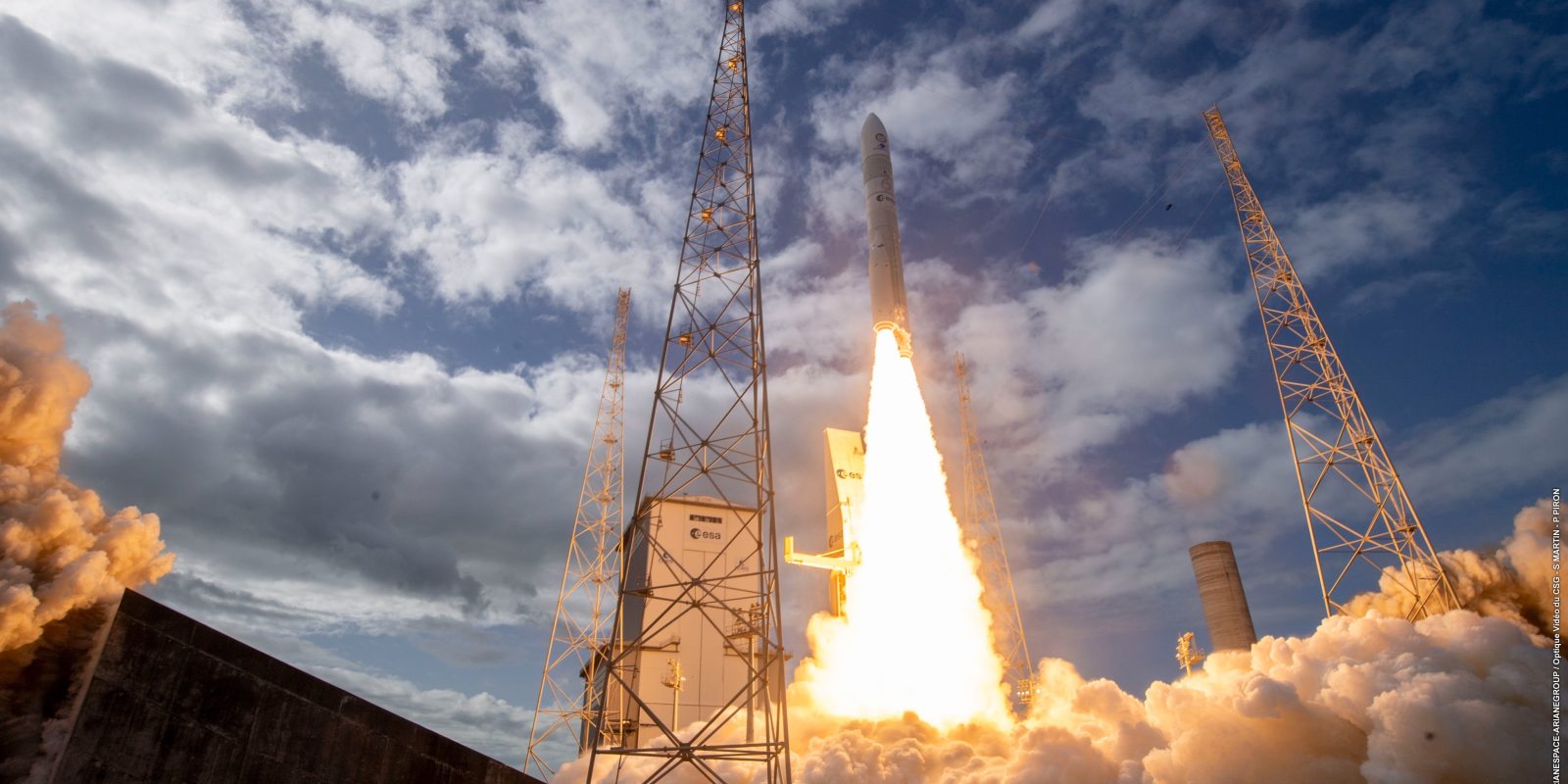
On Tuesday Arianespace and ESA lifted off the long awaited Ariane 6 rocket from its launch site in French Guiana. Delivering several test satellites for multiple customers, the rocket proved it was capable of getting to orbit, however its second stage suffered an anomaly on a highly requested upgrade.
Ariane 6 successfully makes orbit
In the late afternoon, the Ariane 6 leaped off its new launch site just a few miles from where the James Webb Space Telescope launched to space on this rocket’s predecessor. Carrying only a few smallsats, the launched looked more like that of the Vega or Minotaur rockets that lift off very quickly from their respected launch pads.
The Ariane 6 is less of an upgrade from the Ariane 5 and more of an iteration that brings its launch cost down and makes it more competitive with commercial options. With the rise from SpaceX’s Falcon 9 and Heavy rockets, Arianespace has taken a major hit in customers, even its own space agency has moved rockets from them to SpaceX for quicker access to space.
The launch went off with out a major hitch, although its trajectory was rather abnormal given its light payload (Scott Manley has a great explanation in his video). After the rather long ride to orbit, three payloads were deployed into orbit and two static experiments were initiated.
Upper stage relight failure
After reaching orbit and conducting its coast phase, Arianespace attempted to reignite its engine for a deorbiting maneuver. A first for the Ariane rocket, this feature allows customers to purchase rides with direct to geostationary orbit profiles and is imperative for Europe’s zero debris initiative.
At the end of the flight, it was planned to deorbit the second stage, reducing space junk and releasing other experiments as it burned up on reentry.
However, a failure in the APU, auxiliary propulsion unit, failed to allow the second stage rocket to relight. The APU is a secondary thruster that settles propellent toward the bottom of the tank for relighting. This failed, and has left the second stage in orbit, likely without a chance for a controlled reentry.
While the second stage is expected to burn up in the atmosphere, at least one payload still attached to the second stage is designed to survive reentry. This means that if the stage reenters over a populated area, this will bring increased danger to people and property below it. Luckily most of the Earth’s surface is covered in water.
ESA seems unfazed by the APU failure and hope to remedy the issue on future missions. The next Ariane 6 launch is expected to be late this year, carrying a French spy satellite.
FTC: We use income earning auto affiliate links. More.




Comments